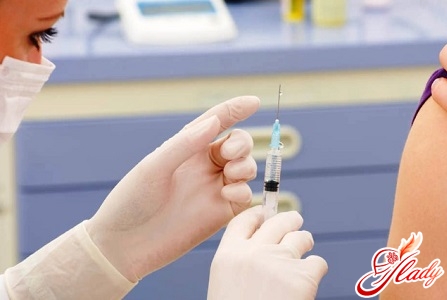 We all know that a dog is man's best friend.And this truth is still relevant today. As the all-knowing Mrs. Statistics says, even in large cities every third family has a dog. It is easy to guess that you can encounter dog hair anywhere - even where dogs are strictly prohibited. Nothing surprising - the hair remains on the soles of shoes, on the clothes of the owners. And goes for a walk around the city with them. It would seem that this is not a problem. In any case, it should not be. However, everything is not so rosy if a person is allergic to dogs. In this case, many difficulties arise, and the person's health is seriously jeopardized. But do not be too upset - in most cases, this allergy is quite possible to keep in check.
We all know that a dog is man's best friend.And this truth is still relevant today. As the all-knowing Mrs. Statistics says, even in large cities every third family has a dog. It is easy to guess that you can encounter dog hair anywhere - even where dogs are strictly prohibited. Nothing surprising - the hair remains on the soles of shoes, on the clothes of the owners. And goes for a walk around the city with them. It would seem that this is not a problem. In any case, it should not be. However, everything is not so rosy if a person is allergic to dogs. In this case, many difficulties arise, and the person's health is seriously jeopardized. But do not be too upset - in most cases, this allergy is quite possible to keep in check.
Symptoms of an allergic reaction to dogs
Allergy to our smaller brothers is practically no different from other types of allergic reactions. But it is still necessary to briefly describe the symptoms:
- Problems with the lungs
Hoarseness, cough, wheezing in the bronchi andlungs, difficulty breathing - all these signs indicate an allergic reaction to dogs. The severity of these symptoms can be very different - it depends on the amount of allergen, on the individual characteristics of the body.
- Problems with the eyes
In almost all cases, the allergic reaction does not spare the eyes - they turn red, itch unbearably, and may start to tear - in a word, all the delights at once.
- Problems with a nasopharynx
In rare cases, it goes without a runny nose.In some cases, the nose simply gets stuffy, but most often there is a liquid mucous transparent discharge - packs of handkerchiefs are used. In particularly severe cases, the throat may start to itch and almost continuous sneezing begins. These symptoms are almost constant companions of an allergic reaction to dogs.
- Skin rashes
Very rarely, but sometimes there are skin problemsmanifestations of allergy to dogs - a rash of varying intensity appears on the skin. Most often, these rashes are localized in the chest, hands and face.
Why is this happening?
Where does this scourge come from?Why can't all people enjoy the company of a furry friend? It is generally accepted that allergies develop specifically from dog fur. In fact, this is not true at all! Almost always, the problem is not in the fur:
- Horny skin particles
The skin of a dog, like that of any other creature,is constantly renewed. And dead cells are peeled off. It is these skin particles that often provoke the development of a strong allergic reaction. This allergic reaction most often leads to the appearance of coughing and wheezing.
- Proteins
A number of skin glands in dogs produce veryspecific proteins. They are found on the animal's skin, on its fur, as well as in saliva and urine. These tiny proteins easily spread in the air, settle on interior items and human clothing. And it is enough for them to get on the mucous membranes, and sometimes on the skin, for an allergic reaction to begin. Of course, only if a person has a predisposition to this type of allergy. Why does not allergy occur in all people? Everything is very simply explained - the immune system of some people is too sensitive. And it reacts very sharply to some substances (allergens), perceiving them as something aggressive - for example, like viruses or bacteria. Sneezing, runny nose - these are just the body's attempts to get rid of the invading allergen.
Diagnosis of an allergic reaction to dogs
Sometimes it is very difficult to determine which one exactlyan allergen in a person causes such a violent reaction. How can you understand that it was the dog that caused the malaise? Of course, you can carefully monitor your condition and eventually notice a certain connection. However, it is most reasonable to seek help from an allergist. The doctor will conduct the necessary studies that will help identify the allergen. As a rule, a special blood test is performed for this, which will accurately determine the allergens to which the body reacts. And sometimes they resort to skin tests - small scratches are made on the skin and allergens dissolved in distilled water are applied to them. After some time, the doctor evaluates the results of the allergy tests. In no case should you ignore these tests - very often the results are completely unpredictable. You can blame four-legged fluffy creatures for years, avoiding contact with them in every possible way. But in fact, it will turn out to be an allergy to pollen, which the dog can bring on its fur from the street. Or, on the contrary, a person will suspect an allergy to cosmetics or certain products, but it will never occur to him that his beloved four-legged friend is to blame for everything.
Treatment of allergic reactions
This type of allergic reaction is treated withstandard scheme, but nevertheless the course of treatment should be selected by an allergist, taking into account all the features of the course of the disease and your overall health.
- Antihistamines
Antihistamines work bythe following principle: they block the effect of allergens on the human immune system. This means that an allergic reaction does not develop. Despite the fact that almost all of these drugs are sold in pharmacies without a prescription, you need to be very careful with them. Some of them have a number of undesirable side effects. The form of release is also different - syrups, drops, tablets and even sprays. Decongestants. If an allergic reaction makes itself known with a runny nose, you cannot do without decongestants, which dilate blood vessels and prevent mucus congestion. These drugs very quickly relieve discomfort.
- Hormonal preparations
Hormonal drugs may be prescribed inthe most severe cases of allergic reactions, when all other treatments are ineffective. These medications cannot be purchased without a doctor's prescription. And you shouldn't even try to do this - the health risks are too high.
Preventing Dog Allergies
So, the examination confirmed the worst fears- You really are allergic to dogs. What should you do next? Will you really have to part with your dog? In cases of severe allergic reactions - alas, the answer to this question is yes. But in most cases, you can get by with less radical methods. Firstly, it is very important to strictly follow all the recommendations of your doctor, take a responsible approach to treatment. Secondly, remember a few simple rules:
- Place of animal
Vacuum your pet's bedding and those areas every day.places where the dog is most often. Do not forget about wet cleaning - doing it once a month is clearly not enough. At least once a week, the bedding should be washed to remove the accumulated hair and dog dandruff.
- Air Filters
If you can afford to buy dryair filter, you are very lucky. Such filters are very effective - they catch up to 70% of all allergens in the air. Calculate for yourself how many times the likelihood of developing allergic reactions is reduced. People who use air filters note that allergy symptoms almost disappear on the third day.
- restricted area
Ideally, every home should have its own uniquea restricted area where dogs are not allowed to enter. And if we are talking about a house where a dog lives, such an area is simply a must. You can go there if you feel symptoms of an allergy attack. It is best if your bedroom becomes such an area. By the way, allowing a dog to climb on your bed is a very bad habit. No matter how clean your pet is, it has no place in bed. Firstly, a large number of allergens can accumulate in bed linen in just two or three days.
- Textile
The furniture should be covered with removable covers, whichshould be washed at least three times a month. Take a close look at your curtains - they should be made of natural fabrics and washing them should not be a problem. Curtains should also be washed twice a month, as they are an excellent collector of allergens. There are also certain requirements for carpets. Today, long-pile carpets are very popular. Of course, they are very pleasant for the feet, and they look very presentable. However, it is in such carpets that the largest number of allergens accumulate, which are very difficult to remove. Therefore, you will notice them on easy-to-clean carpets with short artificial pile. And do not forget to vacuum them every day.
- spring-cleaning
In most houses, general cleaning is doneOnce a month, and that's the best case scenario. If a dog and a person with an allergy to that dog live in the same house, cleaning should be done three to four times a month. Vacuum the furniture thoroughly, wipe the dust, wash the floors. By the way, if the person with an allergy does the cleaning, you shouldn't forget about a protective mask. But it would be best if a healthy family member takes on this responsibility, so as not to provoke an extra attack of allergies.
- Washing an animal
Be sure to bathe your dog at least once.once every two weeks, using a good shampoo. This measure will prevent the accumulation of skin flakes and gland secretions on the dog's fur. This means that the risk of developing an allergy is reduced several times. But do not overdo it, think about the animal - too frequent washing of the dog will lead to overdrying of the skin and fur.
- Walking with dogs
An interesting pattern has been noted -your dog may have a less severe allergic reaction than someone else's. Remember this when walking your four-legged pet. Of course, an animal needs to communicate with its own kind, but it is better to avoid this. Otherwise, allergens from someone else's dog will remain on your dog's fur. And do not be surprised in the evening by another allergic attack.
Hypoallergenic dogs
Lately, you can hear more and more aboutmagical dogs, next to which symptoms of an allergic reaction do not appear even in those who began to itch at the mere word "dog". Is this true or a myth? It is difficult to say for sure - the opinions of experts on this matter are divided. But it is still impossible not to mention it. Supporters of this theory claim that there are several breeds of dogs that do not cause allergies. The peculiarity of these dogs is that they do not shed. But do not rush to rejoice - there is no less trouble with their fur: washing, haircuts. It is a little easier with dogs that are completely devoid of skin. Doctors recommend paying attention to the following breeds:
- Chinese Crested Dog
- Mexican Hairless Dog
There is some truth in this - there is no wool,it does not accumulate skin flakes, and ordinary dust does not settle on the dog. In a word, there are really fewer allergens. But only if you are not allergic to the secretions of the skin glands - hairless dogs have many more of them and they are located all over the surface of the body. Although this problem can be dealt with - it is enough to simply wash the animal more often. Allergists, however, have a different point of view. If you are allergic, but you want to get a dog more than to inherit from your grandmother in Australia, you should consider dog breeds with a modified coat. For example:
- Yorkshire Terrier
This breed is distinguished by its very unusual satinfur - its structure is identical to human hair, it does not shed at all. Cases of allergy to Yorkshire Terriers are so rare that you do not need to worry.
- Bedlington Terriers
Their very soft fur also does not shed, butrequires constant grooming. And the appearance of this breed is quite unique - an amateur. As you can see, an allergy to man's best friends is a serious problem and requires an immediate solution and a responsible approach. But nothing is impossible, if there is a desire! We recommend reading:









